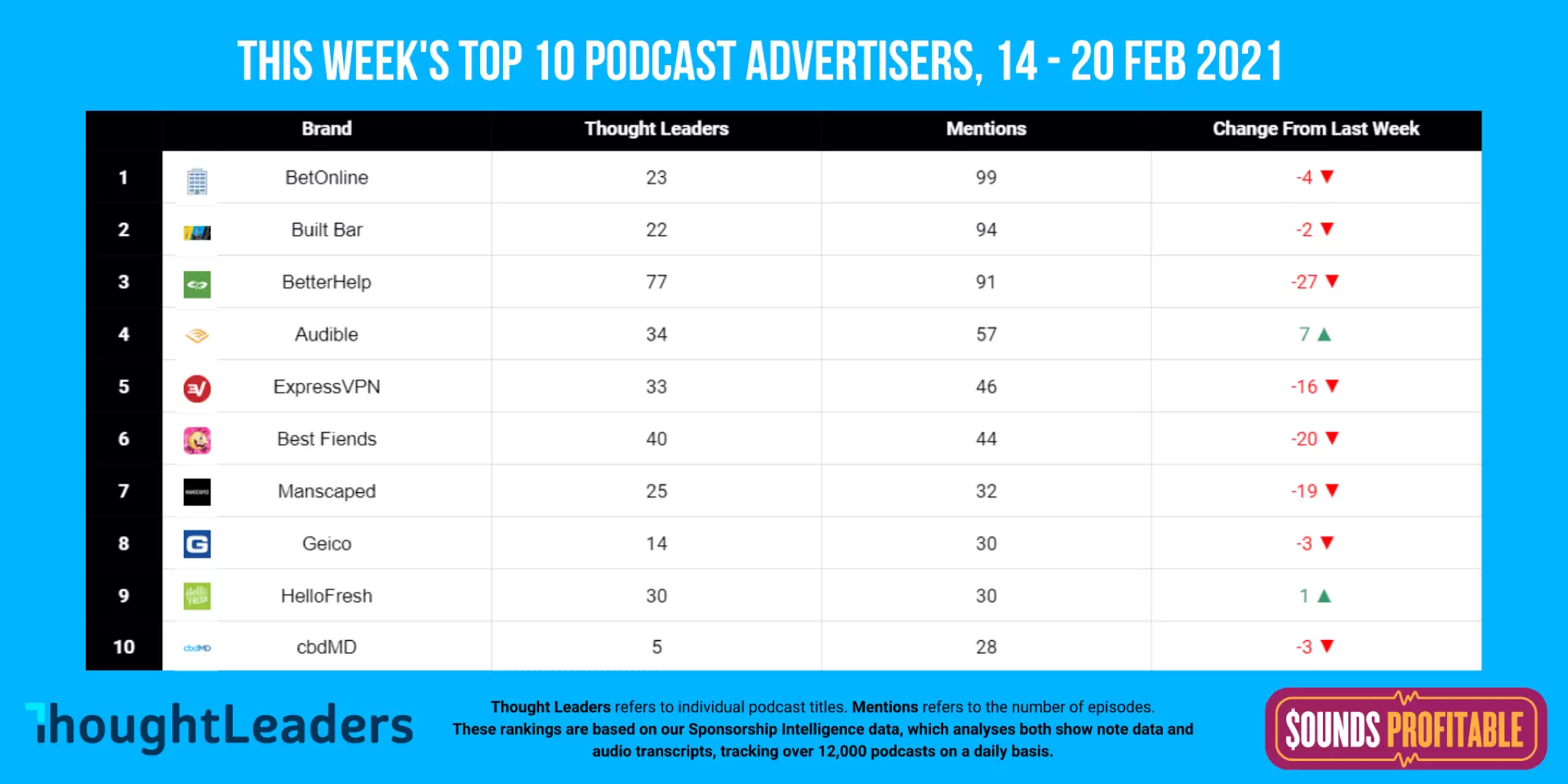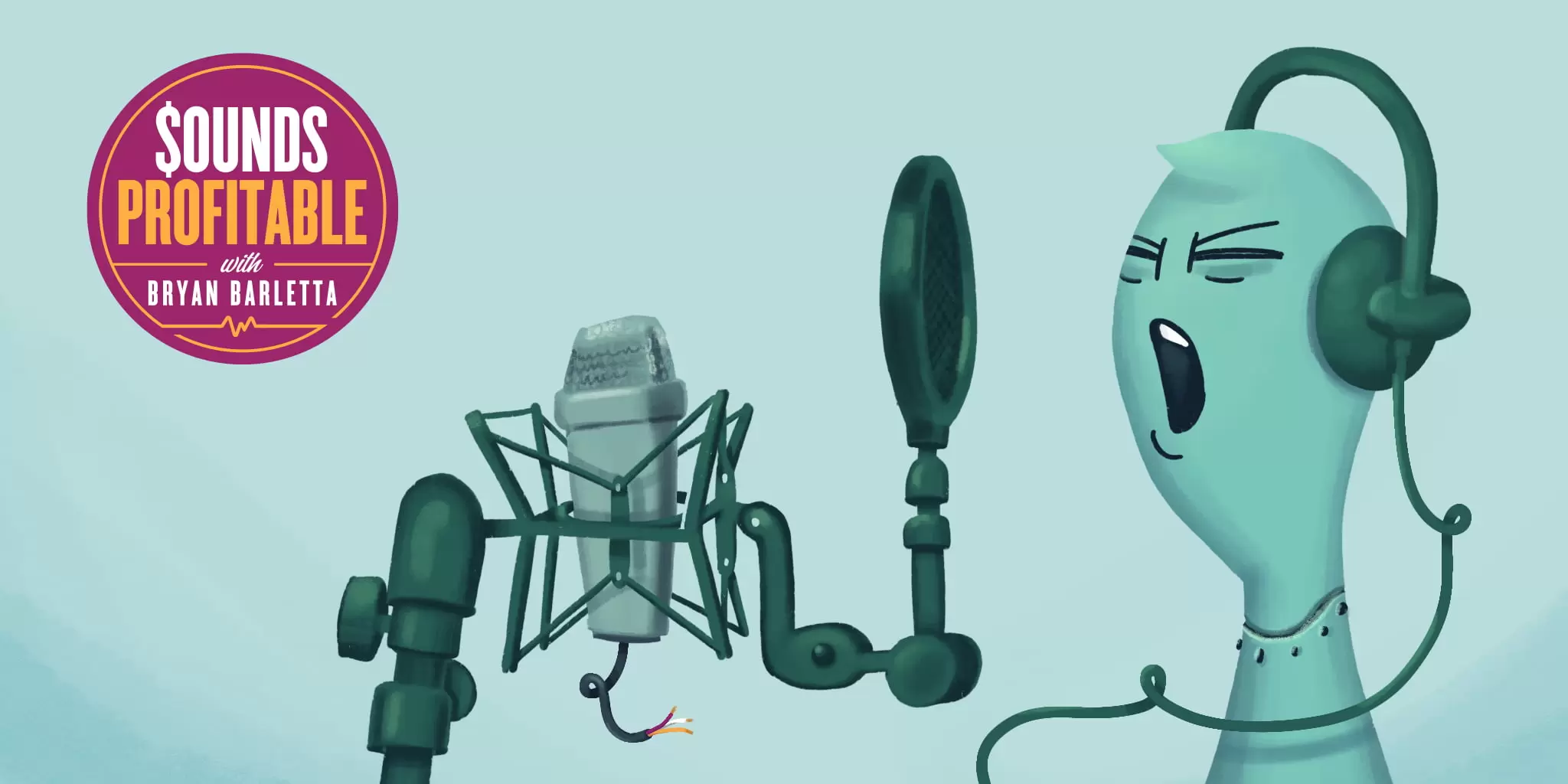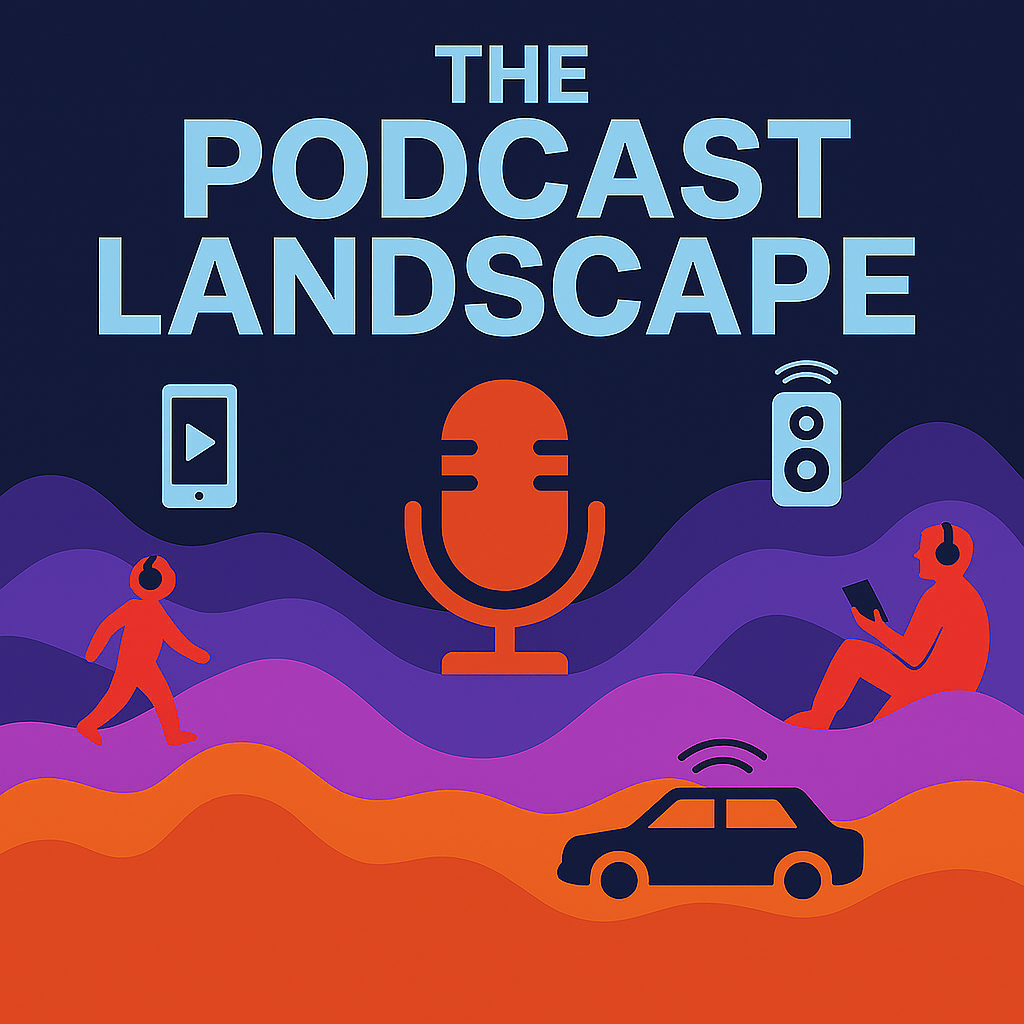Check out the latest episode of the Sounds Profitable podcast. This week, Mark Steadman of Podiant joins us to discuss the Open Podcast Analytics Working Group (OPAWG)
Introduction
PII is an acronym that means “personally identifiable information”.
A user’s IP address—even if it is “aggregate” data at the household or company level—is PII.
IP address is also the only identifier in podcasting that allows advertisers to track the relationship between exposure to an ad and a desired action taken by a listener exposed to an ad campaign.
As the world continues to rightfully kick into high gear around personal privacy, the podcast adtech industrying needs to better grasp what that means for the changes potentially coming our way.
Unless Apple and Spotify decide to start collecting and passing over consent to the hosting providers and the publishers whose content they’re actively listening to, we need to think about what the future of this space looks like, especially if we’re on our own.
So let me help paint that picture.
Disclaimer & Suggestions
I’m not a lawyer.
Nothing I say should be what you base your business decisions around.
But your lawyer probably doesn’t know nearly enough about adtech or podcasting for you to blindly take their advice at face value. Their entire job is to prevent you from liability.
My suggestion is to find a lawyer who wants to learn the intricacies of your podcasting-related business. Someone that will sit through—and understand—a semi-technical breakdown of all the steps between a listener pressing play on a podcast episode until that same listener purchases the mattress.
It doesn’t matter if you’re the publisher, advertiser, or hosting provider in the transaction above There are legal implications for all parties, and you need to understand how they impact your company.
How Attribution Works
There are two sides to attribution; the exposure and the conversion. While I got into that in a bit of detail when reviewing how lift reports work in podcasting, it’s worth repeating.
Exposure is when the listener experiences the ad. Remember, we really don’t have insight into individual listening behavior of an episode. Only the podcast listening apps have this level of data, and those that do share it only provide it in aggregate. As such we’re forced to rely on data from hosting providers that measure when an episode has been downloaded or streamed enough to include an ad.
Conversion is when the user takes the action, often on a website, that the advertiser is measuring for success. Buying a product, signing up for a trial, or requesting a demo are common examples. To attribute a conversion to an exposure, advertisers place a tag on their website, signalling that the desired event has happened.
On the podcast exposure end, there’s only three pieces of data available: IP address, device user agent, and the episode they’re requesting. But on the advertisers side, there’s potential for more data because that conversion tag is firing on a website or an app, since the advertiser owns those outlets.
Savvy digital marketers out there have been drawn to podcast attribution partners for one key reason: The exposure to an ad most likely happens on a mobile device connected to a home wifi, but the conversion event can just as easily take place on a different device, like a personal computer or a tablet, or even outside of the household.
And since attribution is all about directional data, the more accurate a partner can get that data, the more value it provides. Which leads us to how we currently get the maximum amount of accuracy out of podcast attribution.
Legitimate Interest
Public conversation about privacy regulation primarily focuses on consent, putting it on a pedestal.
Why? Because in these incredibly convoluted legalese documents, consent is the clearest thing we can understand: the listener needs to specifically say “yes, you can use my data for this specific purpose”.
There are actually six means of justification (including consent) for whether or not the listeners data can be used. The final justification is the one to keep in mind:
processing is necessary for the purposes of the legitimate interests pursued by the controller or by a third party, except where such interests are overridden by the interests or fundamental rights and freedoms of the data subject which require protection of personal data, in particular where the data subject is a child.
(Emphasis mine.)
Podcasting is widely understood to be an ad supported medium, providing a valid purpose for this data to be collected. And since podcasting doesn’t have the ability for a listener to click, there’s necessity in using the listeners data to determine campaign effectiveness. That’s a legitimate interest.
The collection, augmentation, and sharing of data is what has caught the attention of privacy experts hovering around this space. Their issue doesn’t stem from the serving of ads or evaluating whether the ad was actually effective, but rather how the listeners data was processed and who was allowed access to it.
The process isn’t broken, it just needs to be rethought with the mindset of putting listener privacy first. So if Apple and Spotify can reasonably tell us in aggregate the listen-through metrics for our podcasts, we should realistically be able to show campaign attribution in aggregate.
Here’s how we can do that.
Data Processing Agreements
I sure do like data processing agreements; a clearly defined document that explains the rights to data between two or more parties. Something about getting that all out on paper just has the product manager in me so excited.
At the end of the day, the data in podcast attribution is owned by two sides: the publisher and advertiser. That data is processed by the attribution partner sitting smack dab in the middle. When talking about areas not governed by GDPR, CCPA, and other regulation, the attribution partner would be taking the listener data and advertisers conversion data, then augmenting with their device graph to improve the quality of the match.
But if the attribution partner defines their intent with the data and makes clear that the data coming into their platform will not be augmented in any way, nor will it leave their platform; there’s no room for misunderstanding. The data is used solely for one purpose, in a siloed campaign, without being augmented or shared in its raw form.
And that’s the point of personal privacy.
The advertiser doesn’t need the data from the podcast listener, and the podcast host doesn’t need the data from the people visiting the website. And the attribution partner absolutely doesn’t need the data from the campaign for anything but that specific campaign. And while they could increase their value by augmenting the data they receive with a device graph, it’s hard to justify augmenting that data as “legitimate” when there’s a completely valid way to go about attribution without augmenting it.
Data Augmentation
The most common method of attributing the exposure of an ad heard on a podcast (perhaps on a mobile device) to a conversion (on a webpage likely on a different device) is through a device graph.
Device graphs are a collection of data about individuals, their devices, and their households. Sometimes they’re maintained by the adtech vendor’s directly. More often they are from data aggregators like Liveramp, Claritas, Nielsen, TapAd, and others.
Attribution partners, and even publishers and advertisers on their own, take the data from the listeners they encounter and match it against a device graph in an attempt to identify additional information about the listener. Using IP address alone, a device graph can provide insight into the mobile device IDs, third party cookies, identity information (think user logins), postal addresses, and email addresses of that household.
The device graph’s augmentation of data allows for more robust attribution, such as matching a podcast episode I downloaded from my home wifi to the purchase of a product my wife made on her work laptop, while at the office. Augmentation is all about a more granular view of the listener than they provided us with on their own.
Augmentation does add value. It does increase the accuracy. But it also begins to push into the rights of the individual. The gut reaction taken by too many in this space is to throw the baby out with the bathwater.
But if we strip out the data augment from the device graph, what are we left with?
Something we’re already very familiar with.
Living With What You’ve Got
A few weeks back I wrote an article about how Jordan Harbinger spends nearly $40k a month running podcast ads to drive listeners to his podcast. He measures that with SmartPromos from Chartable.
That product does not use a device graph at all. It relies on matching the IP address of the exposure to the IP address of downloads of Jordan’s podcast. Since a podcast download is both an exposure and a conversion for people using SmartPromo’s, it makes sense not to use the device graph. IP address augmentation isn’t going to provide any additional data that will help match back to another
And it works well enough for Jordan to spend the amounts he’s actively spending and get more than enough directional information to know if a campaign or strategy is working and how to optimize.
Podcast attribution without device graph augmentation is less accurate, with as much as a 30-50% drop in accuracy. But it doesn’t lack value. It can be used on its own in clear attribution reports and even more so it can make for great data for campaign lift reports, which focus further on aggregating data for a clearer directional view.
So while it’s not perfect, nothing in podcast adtech is perfect. Grasping the limitations and learning how to make the most of it is how this industry succeeds.
Dismissing an entire tool because it doesn’t work the same in every environment is not a luxury we have.
Wrapping It Up
Tag-based attribution tracking is not dead because of privacy regulation.
The discomfort around privacy regulation is from the unknown. No lawyer I’ve spoken to will be quoted or join a podcast discussion on the topic. Even the ones focused on privacy are not focused on privacy in podcast adtech.
We default to believing that podcast adtech mimics other adtech industries in their rigidity and unwavering focus on creating uniformity. But it doesn’t, thankfully. Instead it’s full of companies that are very open to exploring how to safely accomplish the goals of their clients without violating personal privacy or the law.
So while we may not be able to hold onto every bell and whistle available in podcast attribution and lift reports, when prioritizing listener privacy regulations, we still end up with enough data to make directional decisions on what is and is not working.
Privacy regulation won’t overtake the world overnight, but it’s unavoidable. The publishers, advertisers, and adtech partners who take advantage of exploring these solutions now will be the leaders in this space tomorrow.
This is worth your attention to get ahead now, instead of scrambling not to fall behind in the future.
Special thanks to Dave Zohrob, Founder of Chartable, for taking the time to walk through how Chartable is prepared to run podcast attribution campaigns in GDPR territories today. If you’re ready to give it a shot, definitely reach out to them.
Homework
Podcast adtech excites me on its own almost as much as teaching others about it does. This space is absolutely accessible to anyone who wants to learn, and it’s important to me not only to share my knowledge with you but to help you ask questions to further your own understanding.
- Does your company have a document defining how they view PII and how they’re willing to use it?
- Is your company’s legal counsel knowledgeable in podcast advertising and the accompanying technology?
- Do you have a standard DPA available for working with partners when PII is involved?
- What is your stance on attribution tracking in territories like GDPR? Did this information encourage you to reconsider it?
Sounds Profitable will never charge our readers to learn from us, but several individuals have asked about supporting us directly. You can find out more about our individual sponsorship at our Patreon.
New Sponsors
Support from our amazing sponsors is truly the only way that Sounds Profitable could exist. They provide me the means to stay completely independent, allowing me to fully write about all aspects of this industry without being bound to any one company. With that said, I’d like to introduce you to our latest sponsors:
- Acast offers tools for podcast creators and advertiser to find and reach millions of engaged listeners around the world, with on-the-ground operations in 10 countries and growing.
This week, I’m also proud to announce a new individual sponsors who I really appreciate and you should get to know.
- Chris Peterson, President of Kindred Media at LionTree, has been a major supporter of Sounds Profitable since we launched. His knowledge of the industry, especially the business side, has been invaluable in rounding out my understanding of the space and improving the quality of my work.
I appreciate the support of all our sponsors, so please take a look at the full list below. If I can make an introduction for you to any of the sponsors, please don’t hesitate to reach out!
If you’d like to learn more about sponsorship or advertising with us, just hit reply.
Market Insights – with ThoughtLeaders

Remembering that this is an incomplete list, it’s still very interesting to see the changes in this past week. BetterHelp has maintained the #1 position on this chart every single week since we started the Market Insights section, so to see them in #3 definitely caught my attention. Another big thing to note is that the mentioned required to hold the top position this past week dropped 19 points. Q1 is always interesting to watch, so hit reply and let me hear your thoughts on this chart.
Product Deepdives
Last week our Product Deepdive with Adswizz went live. If you missed it, you can check it out on demand, whenever works best for you.
Join two audio ad-tech nerds for an entertaining conversation around the power of dynamic ad insertion and the sophisticated podcast buying capabilities available today. In this deep dive Erik Barraud, SVP of Product at AdsWizz, will walk Bryan through the Adswizz planning and buying platform for advertisers, AudioMatic. We cover their media planning feature (inventory forecasting), how to set-up a campaign with granular targeting capabilities, and then wrap it up by covering all the reporting features.
If you missed our other product deepdives, with Podscribe and Triton Digital, you can find them on demand on our website. And keep your eyes peeled for more information on next month’s session with Voxnest. Definitely let us know what you think!
Things to Think About
I highly recommend all my subscribers also subscribe to Podnews. Last week, I found a few pieces of information that caught my attention.
- My hopes for a slow week as I dug myself out of a Texas blizzard were dashed as iHeartMedia bought Triton Digital for $230m. I have so many questions.
- The podcast host changes chart by Podnews is the type of thing I want to see over the bar at PodMov this year. It shows the number of podcasts moving between hosts over a seven day period.
- Spotify has a two hour long event today, called Stream On. James Cridland suggests that there will be content related to helping podcasters monetize their shows, so I’ll be tuning in. Thought, two hours is a lot to ask of people, during a Monday morning.
- Francisco Izuzquiza of Yes We Cast documents their neat experiments with using dynamic ad insertion to create a time machine.
- Yesterday, podcast hosting platform BuzzSprout was the target of a DDoS attack. While the situation absolutely sucks, please take a look at what stellar technical support and customer communication looks like.


















































































































































































































